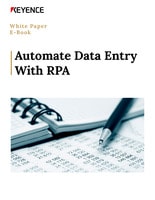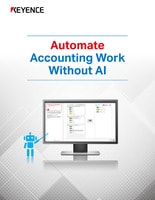RPA (Robotic Process Automation)
Document Management and File Organization with RPA

In today’s digital era, businesses generate an overwhelming amount of documents—contracts, invoices, reports, emails, and more. The challenge is not just storing these documents but ensuring they are properly organized, indexed, and accessible when needed. Poor document management leads to inefficiencies, missed deadlines, compliance issues, and security risks.
Manually organizing and sorting documents across various storage systems can be a slow and error-prone process. Traditional document management systems often lack the automation capabilities necessary to keep up with the fast-paced, data-driven environment in which businesses operate.
Robotic Process Automation (RPA) provides a solution by automating document management workflows, from organizing and categorizing documents to maintaining compliance and retrieving files. With RPA, businesses can reduce human error, enhance security, and streamline their document management processes.
Discover more about this product.
Click here to book your demo.

How RPA Transforms Document Management and File Organization
Automating Document Categorization and Indexing
RPA can automatically sort and categorize incoming documents based on predefined rules. For example, invoices can be automatically tagged as financial documents, while contracts can be classified as legal files. By automatically tagging and indexing documents, RPA ensures that documents are stored in the correct folders or systems, making them easier to retrieve later.
Improved Document Retrieval
Instead of searching through multiple systems or folders for specific files, RPA can automate the retrieval of documents based on specific keywords, dates, or categories. This reduces the time employees spend searching for documents and ensures that they have access to the information they need quickly.
Ensuring Document Compliance
For businesses in regulated industries, document compliance is a critical concern. RPA can automatically ensure that documents meet compliance standards by applying relevant tags and storing them in secure locations. It can also help with audit trails, ensuring that every step of document processing is recorded and traceable.
Reducing Manual Errors and Duplication
Manual document organization is prone to errors, such as misplaced files or duplicate entries. RPA minimizes these risks by automatically organizing documents according to set parameters, ensuring that there are no duplicate records or misplaced files. This helps maintain a cleaner, more accurate document management system.
Enhanced Collaboration and Workflow
With RPA, document workflows can be streamlined, allowing team members to access and share documents quickly. By automating the movement of documents between systems or departments, RPA helps facilitate collaboration and ensures that the right people have access to the right files at the right time.
Key Benefits of Automating Document Management and File Organization with RPA
- Increased Efficiency: RPA reduces the time spent manually sorting and indexing documents, allowing employees to focus on more value-added tasks.
- Improved Accuracy: By eliminating human error, RPA ensures that documents are categorized and indexed correctly, reducing the risk of misplaced or lost files.
- Enhanced Compliance: RPA can automate compliance checks and ensure that all documents are stored securely, reducing the risk of non-compliance with industry regulations.
- Cost Savings: Automating document management processes eliminates the need for physical document storage and manual filing, resulting in cost savings for businesses.
- Better Collaboration: RPA makes document sharing and collaboration easier by ensuring that files are organized, indexed, and easily accessible to authorized users.
Integrating RPA with Document Management Systems
RPA can integrate seamlessly with existing document management systems (DMS). By linking RPA with these systems, businesses can automate the process of uploading, categorizing, and retrieving documents without the need for manual intervention.
This integration helps create a more efficient, secure, and accessible document management environment, ensuring that documents are always organized and easy to find.
Who Benefits from RPA in Document Management and File Organization?
- HR Departments: Automate the organization of employee records, contracts, and payroll documents, ensuring compliance with data protection regulations.
- Legal Teams: Ensure that legal documents, contracts, and agreements are properly categorized, indexed, and securely stored.
- Finance Teams: Automate the organization and archiving of financial records, invoices, receipts, and tax documents for easy retrieval and compliance.
- Operations Teams: Organize project files, contracts, and communication documents in a way that makes them easy to access and collaborate on.
- Businesses Across All Industries: Whether you’re in healthcare, retail, or manufacturing, RPA can streamline document management and organization, reducing costs and increasing efficiency.
Automating document management and file organization with RPA enhances efficiency, reduces errors, ensures compliance, and saves valuable time, helping businesses stay organized and focused on their core tasks.
FAQs
How Can RPA Help Improve Document Retrieval?
RPA can automate the retrieval of documents based on predefined criteria such as keywords, dates, or document types, ensuring quick access to the necessary files without long searches.
Is RPA Able to Handle Document Compliance Requirements?
Yes, RPA can automatically apply compliance rules, ensuring that documents are stored securely and that audit trails are maintained for regulatory purposes.
We’re here to provide you with more details.
Reach out today!

Related Downloads
Related Products
Scroll




